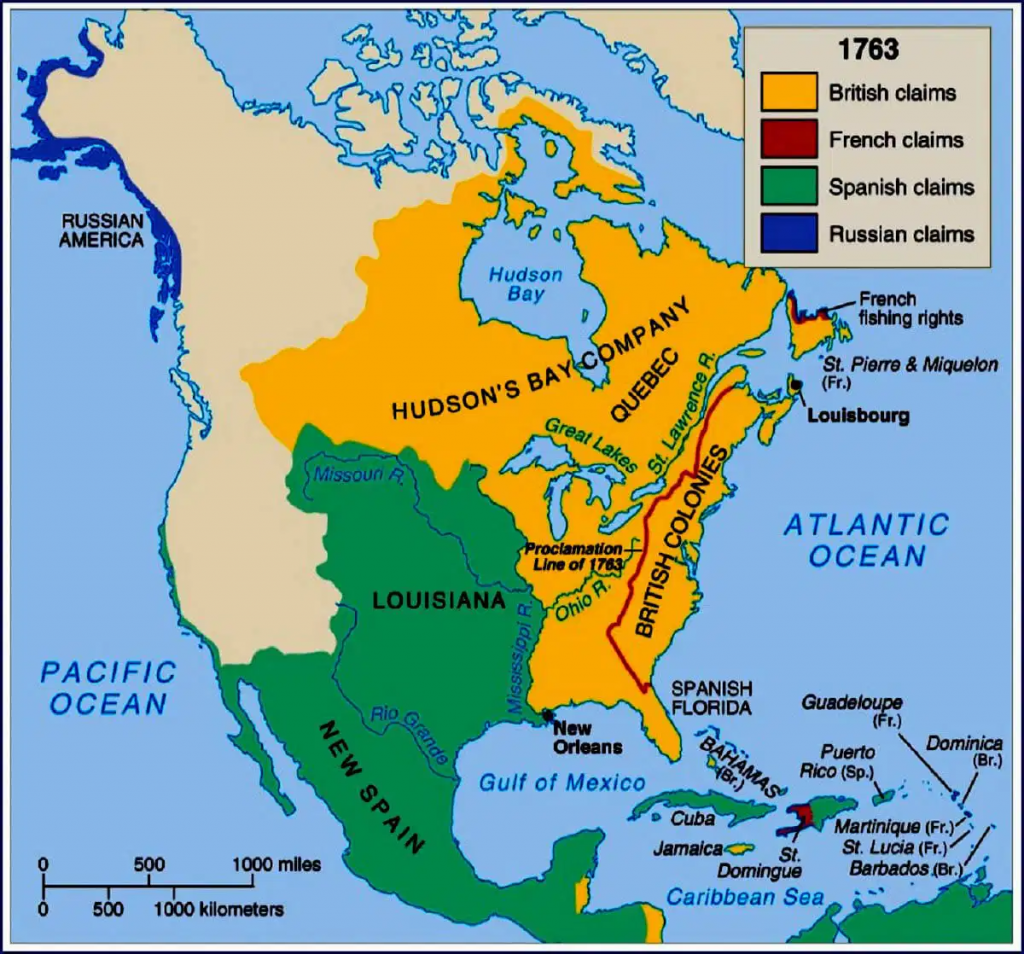The French and Indian War (1754–1763), part of the larger Seven Years’ War, was a pivotal conflict that reshaped the political landscape of North America and set the stage for the American Revolution. What began as a skirmish over territory in the Ohio Valley escalated into a global struggle for supremacy between Britain and France, with profound consequences for the future United States.

The Spark: George Washington’s Misadventure
In 1754, a young George Washington led a Virginia militia into the Ohio Valley, clashing with French forces at Fort Duquesne (modern-day Pittsburgh). This skirmish ignited the French and Indian War, named for the alliance between France and Native American tribes against the British. Washington’s early defeats, including the disastrous Battle of the Monongahela, exposed the vulnerabilities of British colonial forces but also marked the beginning of his rise as a military leader.
The Albany Congress: A Failed Attempt at Unity
As the war escalated, colonial leaders recognized the need for cooperation. In 1754, Benjamin Franklin proposed the Albany Plan of Union at the Albany Congress, urging the colonies to unite under a central government. His famous cartoon, “Join, or Die,” depicted a fragmented snake, symbolizing the colonies’ need for unity. However, colonial rivalries and distrust of centralized authority doomed the plan. Despite this failure, the idea of colonial unity planted seeds that would later bear fruit during the American Revolution.
Turning the Tide: British Victory
The war initially favored the French, who leveraged their alliances with Native American tribes and knowledge of the terrain. However, British fortunes changed with the arrival of skilled commanders like General Edward Braddock (despite his early defeat) and General James Wolfe, whose daring capture of Quebec in 1759 proved decisive. The Battle of the Plains of Abraham saw both Wolfe and his French counterpart, General Montcalm, fall in combat, but British victory secured control of Canada.
By 1763, the Treaty of Paris ended the war, granting Britain vast territories in North America, including Canada and Florida. France ceded its claims east of the Mississippi River, while Spain, France’s ally, received Louisiana west of the Mississippi.
The Aftermath: Seeds of Revolution
While Britain emerged as the dominant colonial power, the war left it deeply in debt. To recoup costs, Britain imposed taxes on its American colonies, sparking resentment and resistance. The Proclamation of 1763, which barred colonists from settling west of the Appalachian Mountains, further inflamed tensions. Colonists felt their contributions to the war effort were being ignored, and their rights as British subjects were being trampled.
The war also exposed the colonies to the idea of collective action. Men like Washington and Franklin gained invaluable experience, and the colonies began to see themselves as part of a larger entity rather than isolated settlements. These shifts in mindset laid the groundwork for the American Revolution.
Cultural Impact and Modern Connections
The French and Indian War was more than a colonial conflict; it was a global struggle that redefined empires and set the stage for modern geopolitics. For the United States, it marked the beginning of a distinct national identity. The war’s legacy is evident in the Declaration of Independence, where grievances against British policies trace back to the postwar period.
Today, the war’s impact can be seen in the cultural and political landscape of North America. The alliances and rivalries it forged influenced the development of the United States and Canada, while the displacement of Native American tribes continues to resonate in ongoing struggles for indigenous rights.
As we reflect on this pivotal conflict, we are reminded that the road to independence is often paved with struggle and sacrifice. The French and Indian War not only shaped the destiny of a young nation but also underscored the enduring importance of unity, resilience, and the pursuit of liberty.

No comments yet.